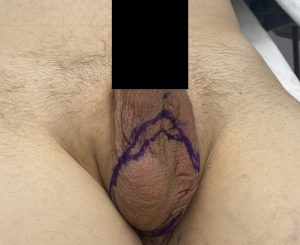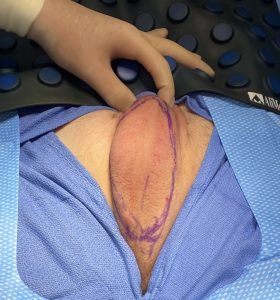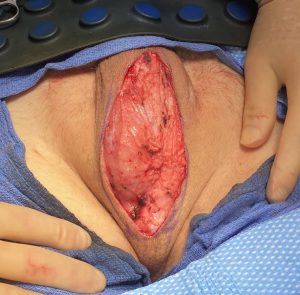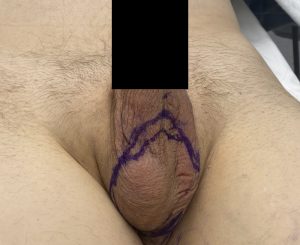Background: The scrotum is a unique male structure that is essentially a dual-chambered sac of hanging skin and smooth muscle. Its main components are the testes and epididymis along with some spermatic fascia. It hangs outside the body for functional reasons which are primarily the regulation of testicular temperature as well as protection from internal abdominal pressure. With age and other factors the scrotal skin may increase and hang lower along with ‘sagging’ testicles.
How much the scrotum should hang from the base of the penis is not an exact aesthetic measurement. Whether it hangs excessively is often a matter of personal preference or can certainly be considered excessive if the amount of hanging skin causing chaffing of the inner thighs or chronic scrotal skin irritation. With excessive scrotal skin often comes very low hanging testicles which can affect one’s quality of life with difficulty in finding clothes to fit or even going to the bathroom.
The only solution for scrotal sagging/low hanging testicles is scrotoplasty or a scrotal lift, a surgical tightening procedure that removes scrotal skin. Most commonly done by a vertical elliptical excision it essentially has a hammock effect to lift and tighten the scrotum. In doing so the testicles are elevated in position as the scrotum is vertically shortened. How much scrotal skin removal and lift is done is determined on an individual basis based on how small or large one wants the scrotum to be.
Case Study: This male had a history of trauma to the scrotum which resulted in a large amount of swelling and resultant loose skin. He also had a history of a prior left testicle removal years previous to the trauma so his one remaining testicle hung exceptionally low. He desired a significant scrotal reduction with the goal of having a scrotal size no larger than a chicken egg.
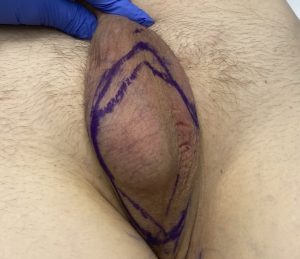
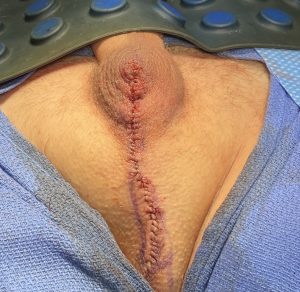

Case Highlights:
1) Scrotal reduction removes excessive hanging skin with or without testicle plication.
2) It may be necessary to extend the scrotal reduction onto the perineum to adequately remove all of the posterior scrotal skin.
3) How small the scrotum can become depends on the patient’s goals for a round shape and is controlled by the vertical extent of the resection.
Dr. Barry Eppley
World Renowned Plastic Surgeon




